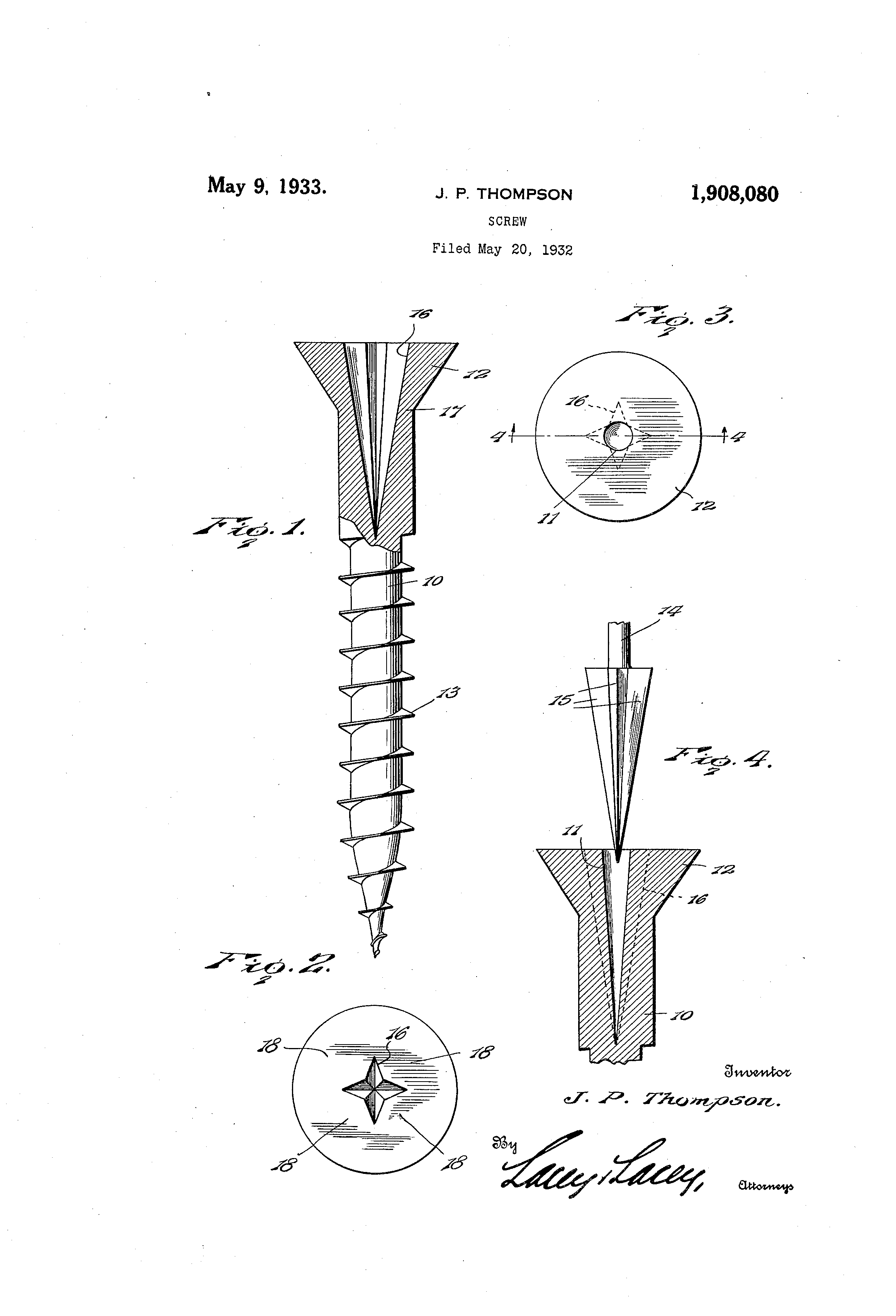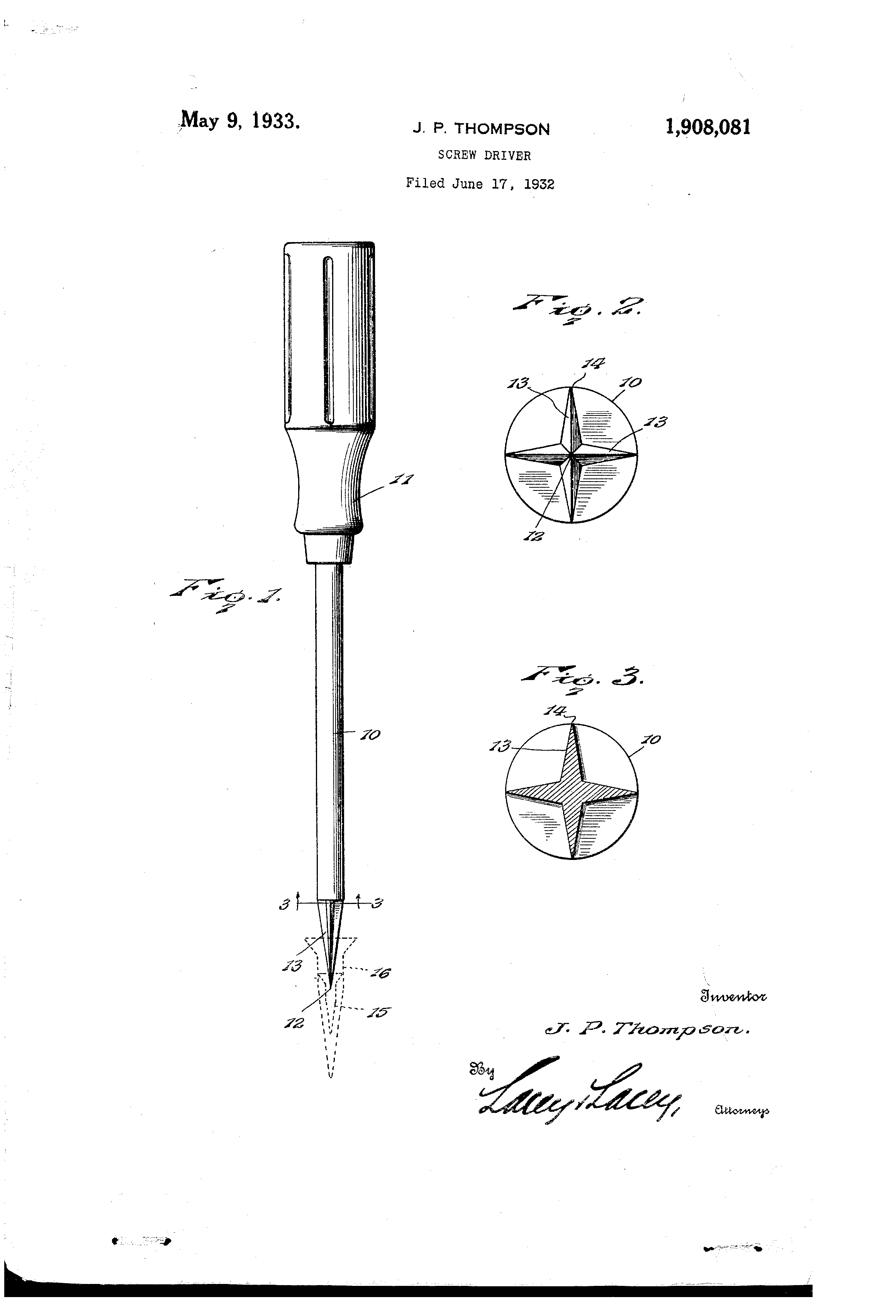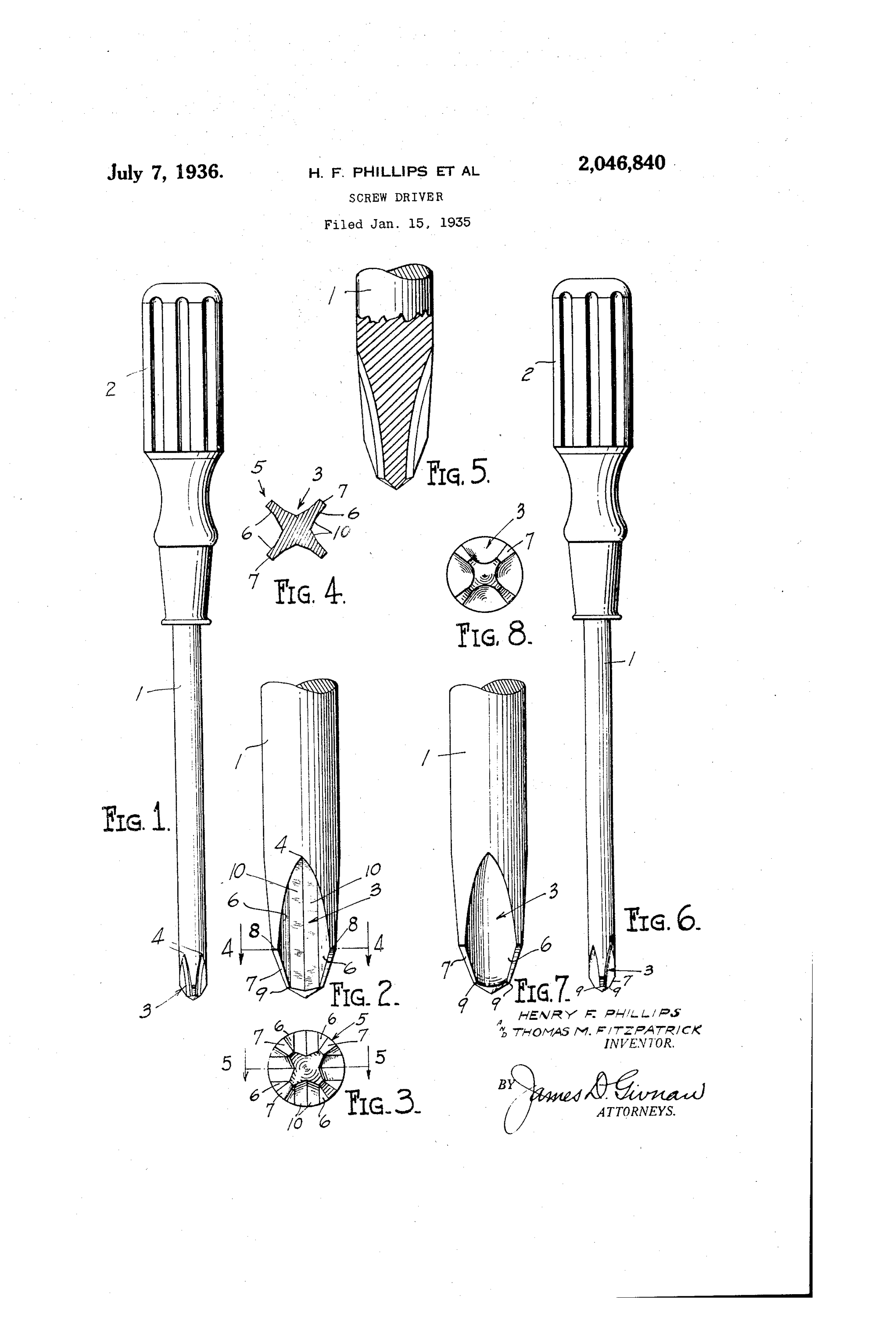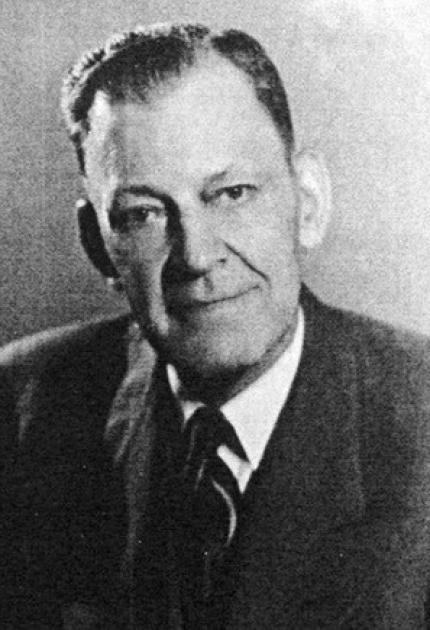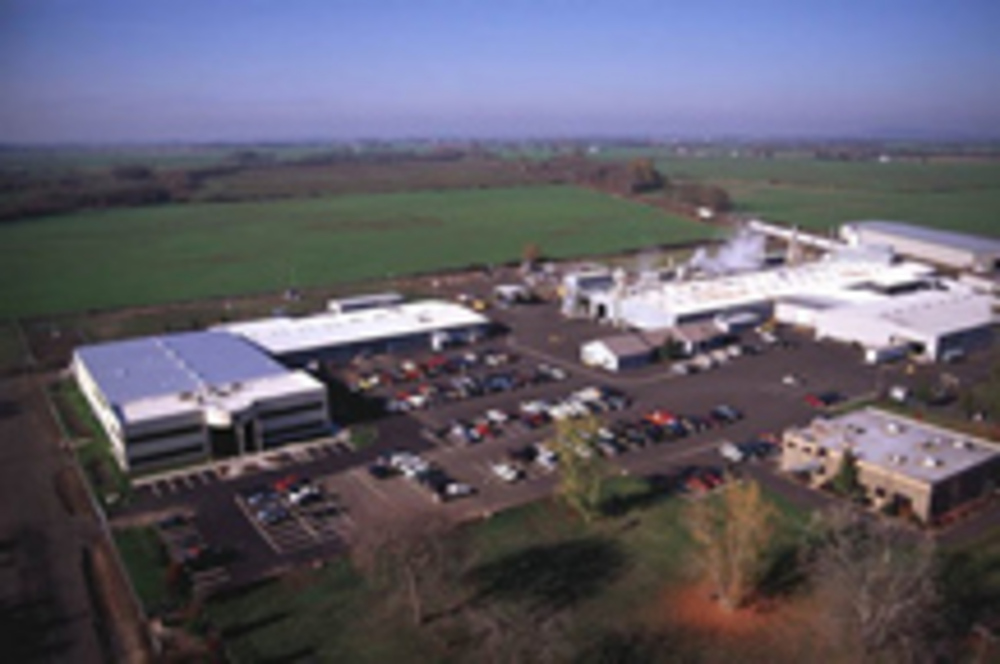The Phillips screw and driver, originally invented by Portlander John P. Thompson, dramatically increased the speed of manufacturing and made the Phillips screwdriver a necessity in every toolbox. Thompson applied for the patent rights on a "Screw" (U.S. Patent 1908080) with an innovative “cruciform groove” and a matching "Screw driver" (U.S. Patent 1908081) in 1932. Although not the first screw of its kind—English inventor John Frearson had patented a screw with a “cruciform orifice” some sixty years earlier—Thompson’s invention eventually revolutionized assembly lines.
Little information remains about Thompson. Born in Wagner, Iowa, in 1857, he moved to Portland in 1920 or 1921 from Bismarck, North Dakota. His occupations are listed in Polk's Portland Directory as “furnished rooms” and “laborer,” although census records indicate that he had worked as a bank cashier and in real estate before moving to Oregon. A Sunday Oregonian article from 1939 stated that Thompson, who died in Portland on September 4, 1940, had been an auto mechanic when he invented the screw.
When the patents were granted in 1933, the rights were assigned "By Direct and Mesne Assignments" to Henry F. Phillips, the managing director of the Oregon Copper Company, a mining outfit in eastern Oregon. The wording on the patent means that it was awarded directly to Henry Phillips, even though Thompson is credited with the invention. There is no locally available information as to why Thompson transferred the rights to Phillips, but there may have been a relationship between Phillips and Thompson predating the issuance of the patent, and perhaps even the application for the patent.
After obtaining the first two patents, Phillips formed the Phillips Screw Company in Portland in 1933 with the aim of licensing the design to manufacturers and collecting the royalties. He soon persuaded E.E Clark, the president of the American Screw Company, to manufacture the screw, and in the next four years the Phillips Screw Company had obtained six additional patents modifying the design. By 1936 the screw was available to consumers, and the first industrial customer was General Motors, which used Phillips screws to build Cadillac automobiles in 1937. Soon after, it was adopted by the railroad and aviation industries.
Until the invention of the Phillips screw, American assembly lines, craftsmen, and consumers used regular, slotted-head screws. But that design was problematic for three reasons: it was difficult to align the driver with the screw aperture; the driver tended to slip from the open ends; and the slot required a closely matching bit. The cruciform drive addressed those problems.
Although the Phillips screw became ubiquitous through its usefulness on the assembly line, it is unknown whether Thompson or Phillips originally intended the invention to specifically solve the challenges presented by regular head screws in manufacturing. Thompson's original patent for a "Screw driver" (U.S. 1908081) featured a diagram of a manual screwdriver, with no mention of the specific applications for which the invention was intended, primarily being concerned with the feasibility of manufacturing the design. U.S patent 2046837, filed by Phillips in 1934 and granted in 1936, mentions driving "either by hand or by power-driven types of tool." The same patent also mentions that the "failure of the slotted screw to retain the blade-driver, especially in power driven operations, is not only dangerous to the operator, but is likewise, always injurious to the work," indicating that by 1934 it had occurred to Phillips that the assembly line was a ripe market.
By 1939, twenty companies had licenses to produce Phillips screws worldwide. In 1940, the Phillips Screw Company grossed $77,421 ($1,323,000 adjusted for inflation), almost all of it in royalties. By then the Phillips screw was in use by nearly every major American automobile manufacturer, as well as by railroad and airplane builders.
The wars raging in Europe and the Pacific drove growth in manufacturing, and Phillips’s company was able to ride the wave of the war boom. As the war effort gave, however, it also took away. Phillips Screw Company depended on licensing the design to foreign manufacturers to grow, and World War II restricted the countries that the company could reliably do business with. In 1939, for example, one licensee, the J. Osawa Company, was ramping up production in Kyoto, Japan; but by 1940 Japan had broken off trade relations with the United States, likely making it difficult for Phillips to collect license fees.
Henry Phillips retired in 1945. In 1947, the U.S. government filed suit against the Phillips Screw Company and seventeen manufacturers of Phillips screws and drivers alleging anti-competitive practices dating back to 1933. They were charged with patent pooling, cartel practices, price-fixing, and the suppression of competing technologies. The case, United States v. Phillips Screw Co., was tried in the U.S. District Court of Northern Illinois (Chicago). The case was concluded in 1949 with a consent decree that dissolved the patent pool, likely making it difficult to protect the collection of patents that the company relied upon to protect its intellectual property. In any case, unlicensed companies had earlier begun to produce similar competing designs, some of which were convinced to buy into the licensing agreement. Other manufacturers, however, said that their designs were not based on the Phillips design, but on the older, unprotected Frearson design. In the same year, a final refinement was patented on the Phillips drive system by an engineer from the American Screw Company; that patent expired in 1966.
Henry Phillips died in his home at the Ione Plaza Apartments in Portland on April 13, 1958; he was sixty-eight years old. Although the Phillips drive system remains far and away the most widely used internal screw-driving system—industry estimates indicate that it is used in at least half of all internally driven screws—it is being steadily replaced by newer technologies. From its current headquarters in Burlington, Massachusetts, the Phillips Screw Company continues to develop and license drive systems that are replacing its founding technology.
-
![]()
J.P. Thompson screw patent 1908080, 1932.
Courtesy U.S. Patent Office
-
![]()
J.P. Thompson screw patent 19008081, 1932.
Courtesy U.S. Patent Office
-
![]()
Phillips screw driver patent 2046840, 1935.
Courtesy U.S. Patent Office
-
![]()
Henry Phillips.
Courtesy National Inventors Hall of Fame
Related Entries
Map This on the Oregon History WayFinder
The Oregon History Wayfinder is an interactive map that identifies significant places, people, and events in Oregon history.
Further Reading
Phillips, Henry F. Means For Uniting a Screw with a Driver. US Patent 2046837, filed July 3, 1934, and issued July 7, 1936.



